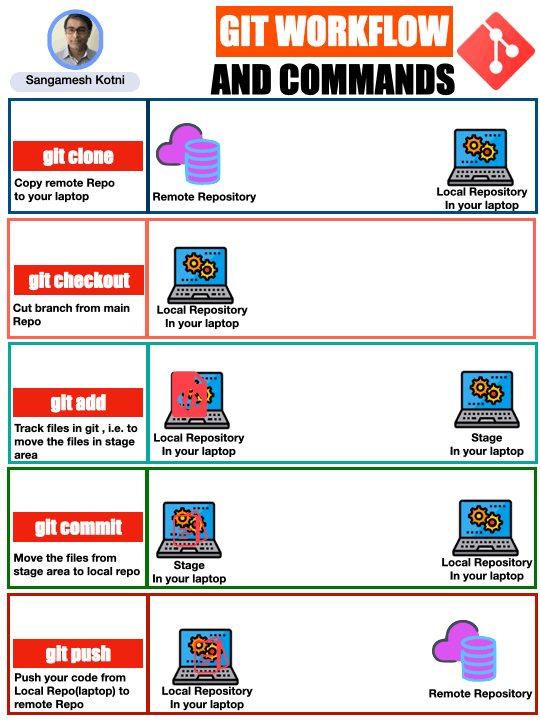𝗴𝗶𝘁 𝗰𝗹𝗼𝗻𝗲 <𝗿𝗲𝗽𝗼> : To work on an existing project, you’ll want to clone (copy) it to your local machine. This command does that.
𝗴𝗶𝘁 𝗰𝗵𝗲𝗰𝗸𝗼𝘂𝘁 -b <𝗯𝗿𝗮𝗻𝗰𝗵𝗻𝗮𝗺𝗲> : If you want to switch to a different branch, use this command.
𝗴𝗶𝘁 𝗮𝗱𝗱 <𝗳𝗶𝗹𝗲𝗻𝗮𝗺𝗲> : After you’ve made some changes to your files, you’ll want to stage them for a commit. This command adds a specific file to the stage.
𝗴𝗶𝘁 𝗮𝗱𝗱 . 𝗼𝗿 𝗴𝗶𝘁 𝗮𝗱𝗱 -𝗔 : Instead of adding files one by one, you can add all your changed files to the stage with one command.
𝗴𝗶𝘁 𝗰𝗼𝗺𝗺𝗶𝘁 -𝗺 “𝗖𝗼𝗺𝗺𝗶𝘁 𝗺𝗲𝘀𝘀𝗮𝗴𝗲” : Now that your changes are staged, you can commit them with a descriptive message.
𝗴𝗶𝘁 𝗽𝘂𝘀𝗵 𝗼𝗿𝗶𝗴𝗶𝗻 <𝗯𝗿𝗮𝗻𝗰𝗵𝗻𝗮𝗺𝗲> : This command sends your commits to the remote repository.
Git is an extremely powerful tool with plenty more commands and options.
However, this guide gives you a good start and reference point as you continue to explore and leverage Git for your version control needs.



